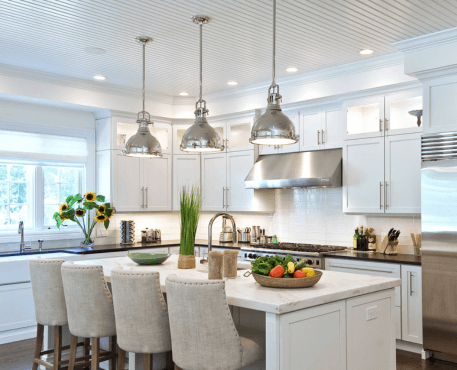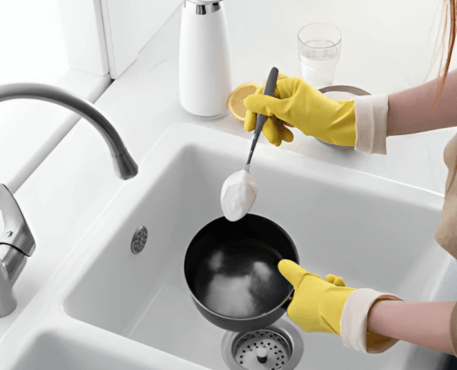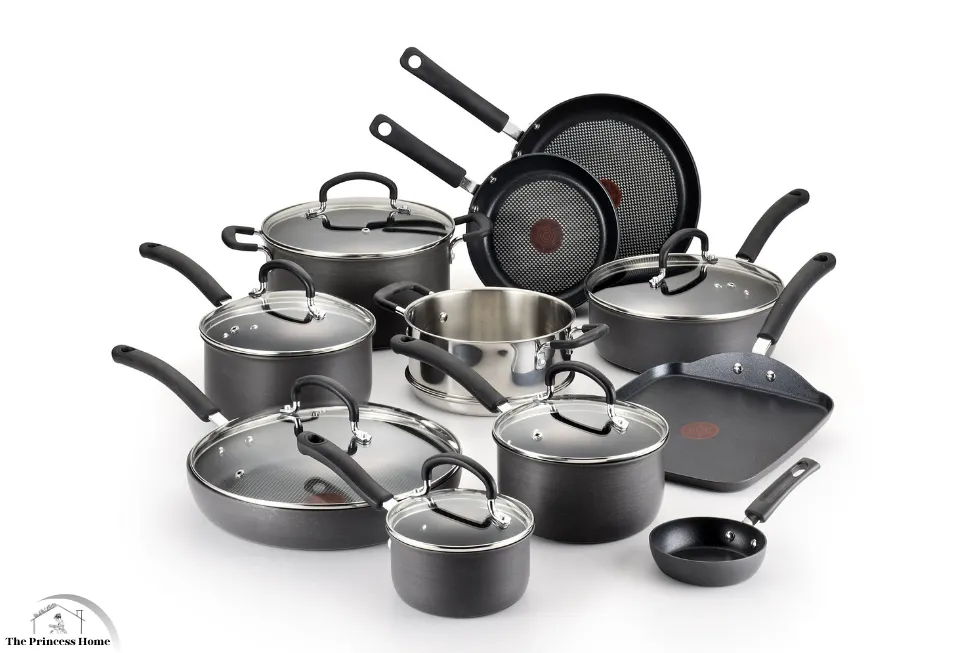
Cooking is not just about ingredients and recipes; it also involves the tools we use. Among these tools, pots and pans play a crucial role in the cooking process. However, not all cookware is created equal, and some materials may have health implications when exposed to high temperatures or acidic foods. In this guide, we’ll delve into the factors to consider when choosing healthy pots for cooking, ensuring that your culinary adventures prioritize both flavor and well-being.
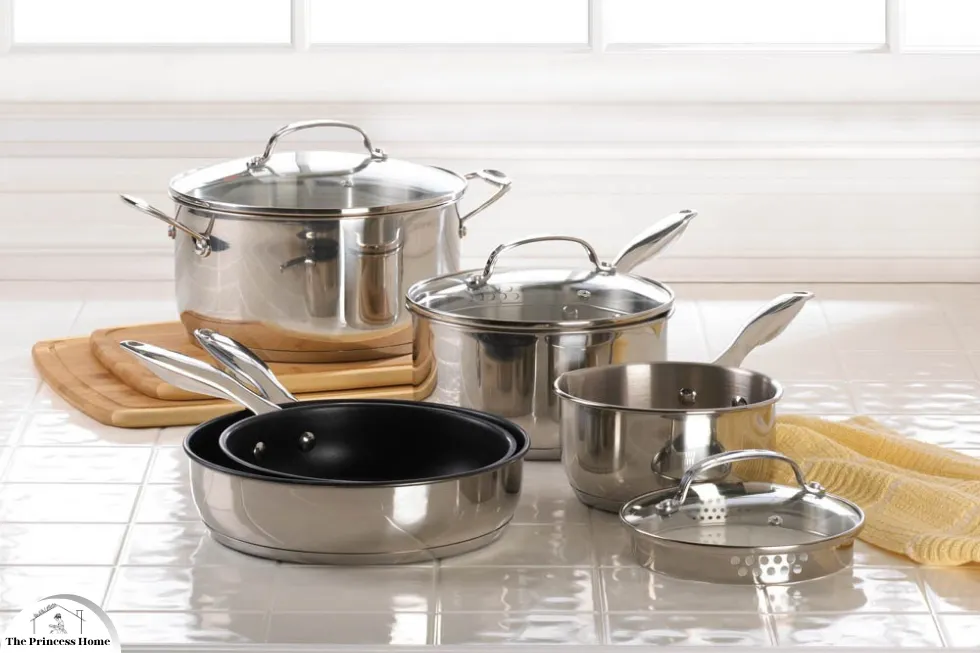
Understanding Material Safety:
The first step in selecting healthy pots for cooking is understanding the safety of different materials. Here are some common materials used in cookware and their pros and cons:
Here are some common materials used in cookware and their pros and cons
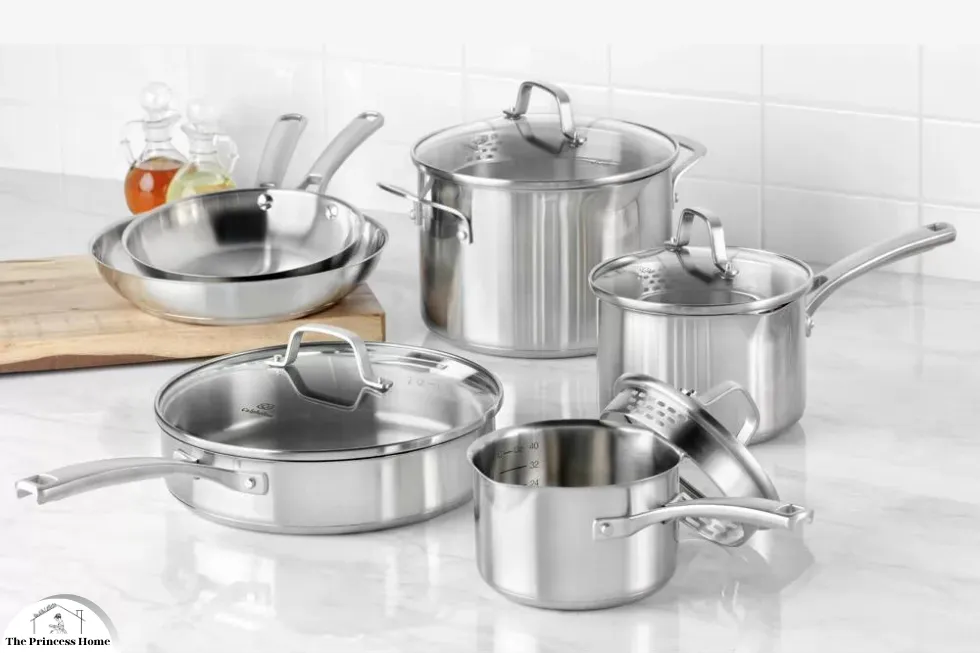
1.Stainless Steel:
Stainless steel is prized for its durability, non-reactive properties, and resistance to corrosion. It does not leach any harmful chemicals into your food, making it a safe choice for cooking a wide range of dishes.
Stainless steel cookware is a popular choice for many home cooks and professional chefs alike due to its durability, versatility, and non-reactive nature. Here’s a detailed look at the characteristics, advantages, and considerations associated with stainless steel pots and pans:
Characteristics of Stainless Steel Cookware:
1.Composition:
Stainless steel is an alloy composed primarily of iron, with chromium being the essential element that provides its corrosion-resistant properties. Nickel is often added to enhance the steel’s durability and shine.
2.Non-reactive:
One of the most significant advantages of stainless steel cookware is its non-reactive nature. It does not react with acidic or alkaline foods, ensuring that flavors remain unaltered and eliminating concerns about metal leaching into food.
3.Durable:
Stainless steel is highly durable and resistant to rust, corrosion, and scratches. It can withstand high temperatures without warping or deforming, making it suitable for various cooking methods, including searing, sautéing, boiling, and steaming.
4.Easy to Clean:
Stainless steel cookware is relatively easy to clean, especially if it has a smooth, non-porous surface. Most stainless steel pots and pans are dishwasher safe, but hand washing with warm, soapy water is recommended to maintain their appearance and longevity.

Advantages of Stainless Steel Cookware:
1.Versatility: Stainless steel cookware is compatible with all types of stovetops, including gas, electric, ceramic, and induction. It can also be used in the oven for roasting or baking, offering versatility in cooking techniques.
2.Heat Distribution: While stainless steel is not the best conductor of heat on its own, many stainless steel cookware sets feature encapsulated aluminum or copper cores in the base or throughout the body of the cookware. These materials improve heat conduction and distribution, ensuring even cooking and preventing hot spots.
3.Longevity: High-quality stainless steel cookware can last for many years with proper care. Unlike non-stick coatings that can wear off over time, stainless steel maintains its appearance and performance for a prolonged period, making it a cost-effective investment in the kitchen.

Considerations for Stainless Steel Cookware:
1.Heat Retention: Stainless steel cookware does not retain heat as well as some other materials, such as cast iron or copper. Preheating the cookware before adding ingredients and using a lid to trap heat can help compensate for this limitation.
2.Price: While stainless steel cookware is available at various price points, high-quality, multi-ply stainless steel sets can be relatively expensive compared to other options. However, investing in durable, well-constructed cookware can pay off in terms of performance and longevity.
3.Maintenance: Stainless steel cookware is generally low-maintenance, but it can develop discoloration, stains, or a white film (known as “white spotting”) when exposed to certain foods or cooking techniques. Regular cleaning and occasional polishing with stainless steel cleaner or vinegar can help restore its shine and appearance.
- Pros: Durable, non-reactive, and does not leach chemicals into food.
- Cons: Poor heat conductivity unless layered with aluminum or copper. Look for stainless steel pots with a copper or aluminum core for better heat distribution.
In conclusion, stainless steel cookware is a versatile, durable, and non-reactive option for home cooks and professional chefs. By understanding its characteristics, advantages, and considerations, you can make an informed decision when choosing stainless steel pots and pans for your kitchen. Whether you’re searing steaks, simmering sauces, or sautéing vegetables, stainless steel cookware offers reliable performance and longevity for all your culinary endeavors.

2.Cast Iron:
Cast iron cookware is revered for its excellent heat retention and even heating properties. When properly seasoned, it develops a natural non-stick surface and can add small amounts of dietary iron to your food. However, acidic foods can cause it to react, so it’s best to avoid prolonged cooking of such dishes.
Cast iron cookware has been a staple in kitchens for centuries, prized for its durability, excellent heat retention, and versatility. Here’s an in-depth exploration of the characteristics, advantages, and considerations associated with cast iron pots and pans:
Characteristics of Cast Iron Cookware:
1.Material Composition:
Cast iron cookware is made by melting iron and pouring it into molds to create pots, pans, and other kitchen utensils. It is known for its ruggedness and resilience, making it suitable for high-heat cooking and long-term use.
2.Excellent Heat Retention:
One of the standout features of cast iron cookware is its exceptional heat retention properties. Once heated, cast iron retains heat evenly and for an extended period, making it ideal for tasks like searing, frying, and baking.
3.Natural Non-Stick Surface:
When properly seasoned, cast iron develops a natural non-stick surface that improves with use. Seasoning involves coating the cookware with oil and baking it at a high temperature, creating a polymerized layer that prevents food from sticking and enhances flavor.
4.Versatility:
Cast iron cookware is incredibly versatile and can be used on all cooking surfaces, including stovetops, ovens, grills, and even campfires. It is suitable for a wide range of cooking techniques, from frying and sautéing to roasting and baking.

Advantages of Cast Iron Cookware:
1.Durability: Cast iron cookware is renowned for its durability and longevity. With proper care and maintenance, it can last for generations, making it a worthwhile investment for both home cooks and professional chefs.
2.Adds Dietary Iron: Cooking in cast iron can increase the iron content of your food, especially when preparing acidic or high-moisture dishes. This can be beneficial for individuals at risk of iron deficiency or anemia.
3.Enhances Flavor: The porous surface of cast iron absorbs and retains the flavors of previous meals, imparting a depth of flavor to subsequent dishes. This seasoning effect adds character and richness to your cooking over time.
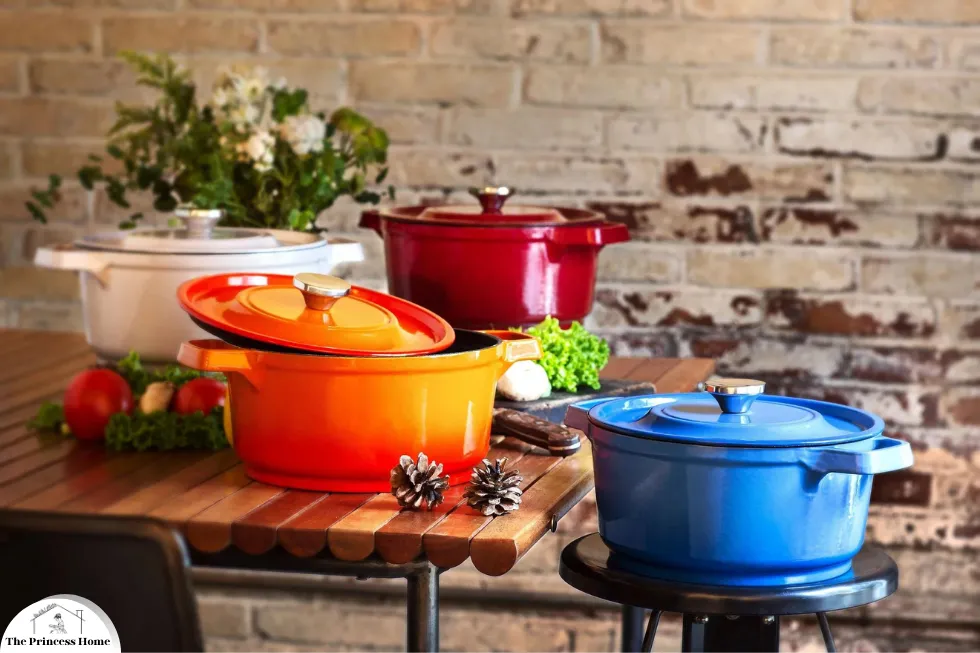
Considerations for Cast Iron Cookware:
1.Maintenance: Cast iron cookware requires regular maintenance to keep it in optimal condition. This includes seasoning the cookware periodically to maintain its non-stick surface and prevent rusting. It’s essential to avoid using soap or harsh abrasives when cleaning cast iron, as these can strip away the seasoning.
2.Weight: Cast iron cookware is heavy, which can make it cumbersome to handle, especially when filled with food. However, the weight also contributes to its stability and heat retention properties.
3.Reactivity with Acidic Foods: Cast iron can react with acidic ingredients like tomatoes or vinegar, potentially imparting a metallic taste to the food and causing the cookware to leach iron into the dish. While this can be beneficial for increasing iron intake, it may not be suitable for all recipes or dietary preferences.
4.Risk of Rusting: Cast iron is susceptible to rust if not properly cared for. To prevent rust, it’s essential to thoroughly dry the cookware after washing and store it in a dry place. Applying a thin layer of oil or fat to the surface can also help protect against corrosion.
- Pros: Excellent heat retention, naturally non-stick when seasoned, and adds dietary iron to food.
- Cons: Requires maintenance to prevent rusting and may react with acidic foods, leading to a metallic taste. Avoid cooking acidic dishes in unseasoned cast iron cookware
In conclusion, cast iron cookware offers numerous advantages, including durability, excellent heat retention, and natural non-stick properties. By understanding its characteristics and considerations, you can enjoy the benefits of cast iron cooking while ensuring that your cookware remains in top condition for years to come. Whether you’re frying up crispy bacon, baking a golden cornbread, or searing a juicy steak, cast iron cookware is a timeless addition to any kitchen.
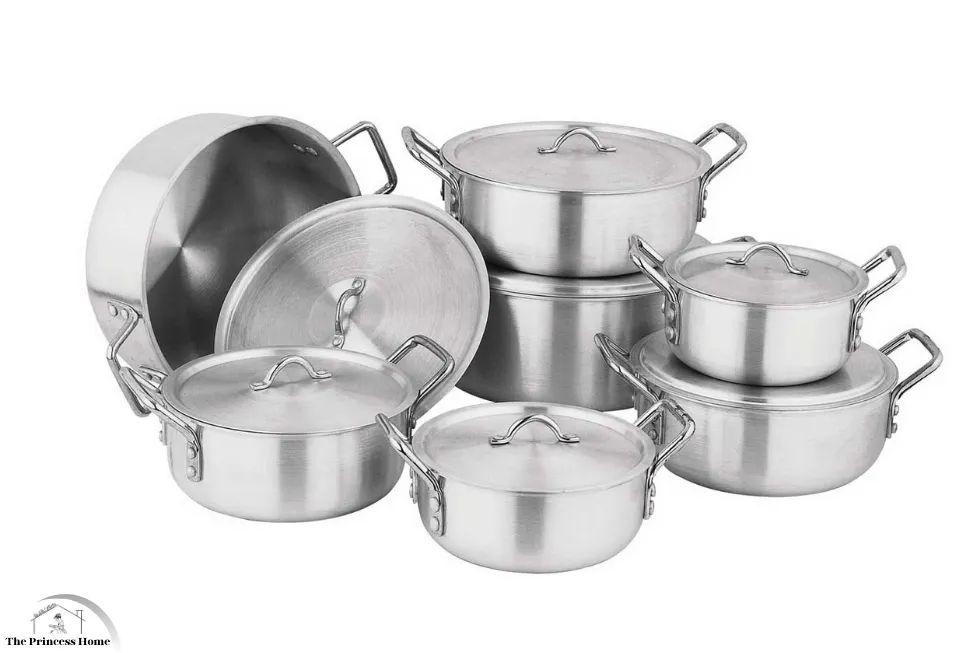
3.Aluminum
Aluminum cookware is widely used in kitchens around the world due to its affordability, lightweight nature, and excellent heat conductivity. However, there are considerations regarding its safety and durability. Let’s explore the characteristics, advantages, and considerations associated with aluminum pots and pans:
Characteristics of Aluminum Cookware:
1.Material Composition:
Aluminum cookware is made from aluminum metal, which is known for its lightweight and excellent heat conductivity. This means that aluminum heats up quickly and distributes heat evenly, making it suitable for various cooking techniques.
2.Affordability:
Aluminum cookware is often more affordable than other materials such as stainless steel or copper, making it an accessible option for home cooks on a budget.
3.Lightweight:
Aluminum cookware is significantly lighter than other materials like cast iron or stainless steel, which can make it easier to handle, especially for individuals with limited strength or mobility.
4.Heat Conductivity:
Aluminum is an excellent conductor of heat, which means that it heats up quickly and responds rapidly to changes in temperature. This makes aluminum cookware ideal for tasks that require precise heat control, such as sautéing and frying.

Advantages of Aluminum Cookware:
1.Efficient Heat Distribution: Aluminum cookware distributes heat evenly across the cooking surface, preventing hot spots and ensuring that food cooks uniformly. This results in consistent cooking results and reduces the risk of burning or undercooking.
2.Quick Heating: Aluminum heats up quickly, reducing the time needed to preheat pans and bringing ingredients to temperature faster. This can be advantageous for busy cooks or when preparing meals with short cooking times.
3.Affordability: Aluminum cookware is generally more affordable than other types of cookware, making it a budget-friendly option for home cooks, students, or those outfitting a new kitchen.
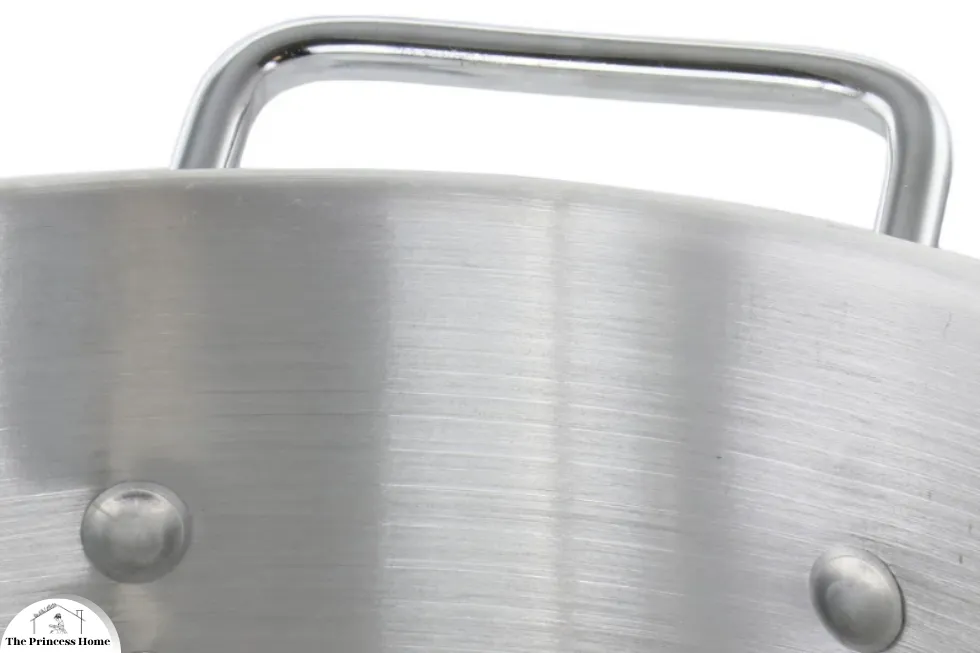
Considerations for Aluminum Cookware:
1.Reactivity: Uncoated aluminum cookware can react with acidic or alkaline foods, causing the metal to leach into the food and altering its taste. This can also result in discoloration of the cookware or the formation of dark spots.
2.Durability: While aluminum cookware is lightweight and affordable, it is also prone to dents, scratches, and warping, especially at high temperatures. This can affect the longevity and performance of the cookware over time.
3.Health Concerns: There have been some concerns raised about the potential health risks associated with aluminum exposure, particularly when cooking acidic foods or using aluminum cookware that is scratched or damaged. While the evidence is inconclusive, some individuals may prefer to err on the side of caution and opt for alternative cookware materials.
4.Non-Stick Coatings: Some aluminum cookware is coated with non-stick coatings to prevent food from sticking to the surface. However, traditional non-stick coatings like Teflon (PTFE) may release harmful fumes when overheated, so it’s essential to choose aluminum cookware with safe and durable non-stick coatings.
- Pros: Excellent heat conductivity, lightweight, and affordable.
- Cons: May react with acidic or alkaline foods, leading to a metallic taste or discoloration. Anodized aluminum cookware is a safer option as it is treated to prevent reactions with food.
In conclusion, aluminum cookware offers efficient heat distribution, quick heating, and affordability, making it a popular choice for many home cooks. However, it’s essential to consider factors such as reactivity, durability, and potential health concerns when selecting aluminum cookware for your kitchen. Whether you’re sautéing vegetables, simmering sauces, or frying eggs, aluminum cookware can be a versatile and practical addition to your culinary arsenal.
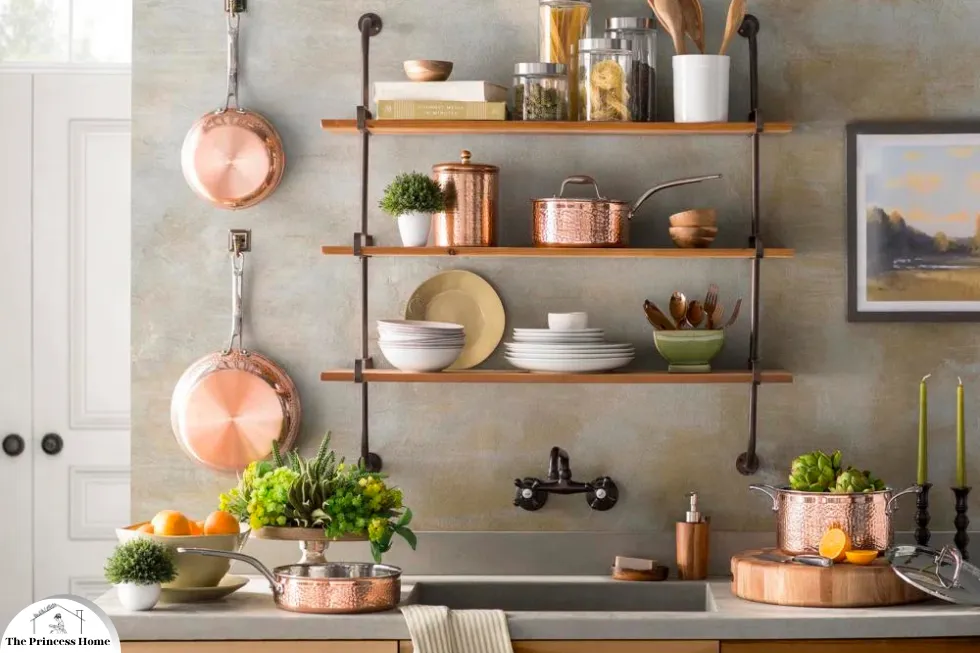
4.Copper:
Copper cookware has long been prized by professional chefs and culinary enthusiasts for its exceptional heat conductivity, precise temperature control, and aesthetic appeal. However, there are considerations regarding its reactivity, maintenance, and cost. Let’s explore the characteristics, advantages, and considerations associated with copper pots and pans:
Characteristics of Copper Cookware:
1.Material Composition:
Copper cookware is made from solid copper or lined with other metals such as stainless steel or tin. Solid copper cookware offers superior heat conductivity, while lined copper cookware provides the benefits of copper with added durability and non-reactivity.
2.Excellent Heat Conductivity:
Copper is renowned for its exceptional heat conductivity, which means that it heats up quickly and distributes heat evenly across the cooking surface. This allows for precise temperature control and prevents hot spots, resulting in more uniform cooking results.
3.Responsive to Temperature Changes:
Copper cookware responds rapidly to changes in temperature, making it ideal for tasks that require precise heat adjustment, such as sautéing, simmering, and making delicate sauces.
4.Aesthetic Appeal:
Copper cookware is prized for its timeless elegance and aesthetic appeal. It adds a touch of sophistication to any kitchen and can be displayed proudly as both functional cookware and decorative pieces.

Advantages of Copper Cookware:
1.Superior Heat Conductivity: The primary advantage of copper cookware is its unmatched heat conductivity, which allows for precise temperature control and even cooking. This makes copper pots and pans particularly well-suited for tasks that require precise heat adjustment, such as caramelizing sugar or making delicate sauces.
2.Quick Heating and Cooling: Copper heats up quickly and cools down rapidly, providing efficient energy transfer and reducing cooking times. This can be advantageous for busy cooks or when preparing meals with short cooking times.
3.Versatility: Copper cookware is suitable for all cooking surfaces, including gas, electric, ceramic, and induction cooktops. It can also be used in the oven for roasting or baking, offering versatility in cooking techniques.
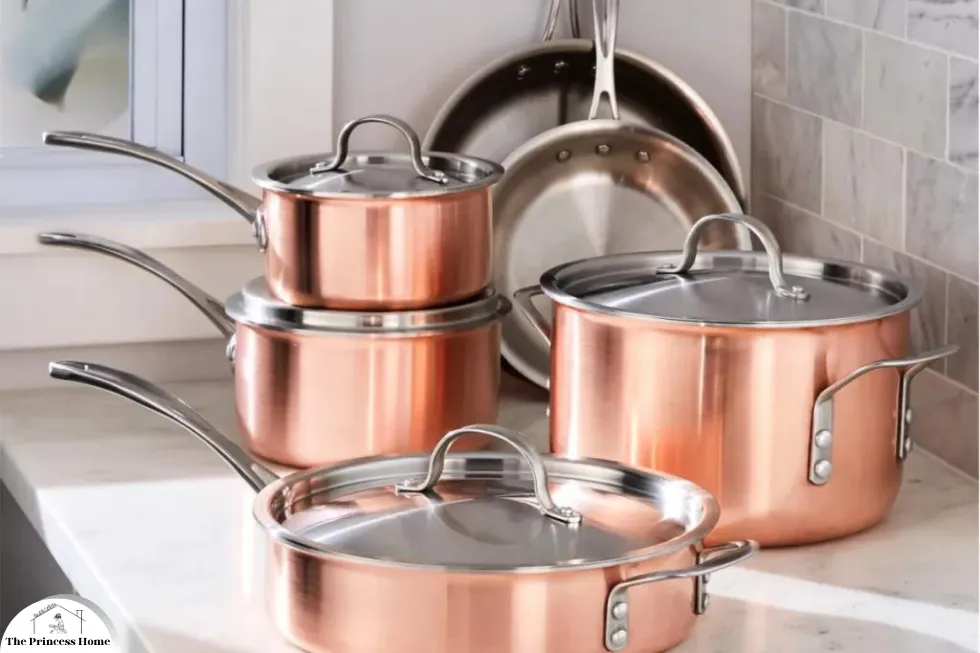
Considerations for Copper Cookware:
1.Reactivity: Copper is reactive with acidic foods, such as tomatoes or vinegar, which can cause the metal to leach into the food and alter its taste. To prevent this reaction, copper cookware is often lined with non-reactive materials such as stainless steel or tin.
2.Maintenance: Copper cookware requires regular maintenance to keep it in optimal condition. This includes polishing the cookware to maintain its luster and prevent tarnishing, as well as re-tinning lined copper cookware periodically to restore its non-reactive surface.
3.Cost: Copper cookware is generally more expensive than other types of cookware due to its premium materials and craftsmanship. However, many chefs and cooking enthusiasts consider it a worthwhile investment for its superior performance and durability.
4.Weight: Solid copper cookware can be heavy and cumbersome to handle, especially when filled with food. However, the weight also contributes to its stability and heat retention properties.
- Pros: Superior heat conductivity, providing precise temperature control.
- Cons: Expensive, reactive with acidic foods, and can be toxic in large amounts. Copper cookware is often lined with stainless steel or tin to prevent leaching.
In conclusion, copper cookware offers unparalleled heat conductivity, precise temperature control, and aesthetic appeal, making it a favorite among professional chefs and home cooks alike. By understanding its characteristics and considerations, you can make an informed decision when choosing copper pots and pans for your kitchen. Whether you’re searing meats, sautéing vegetables, or simmering sauces, copper cookware can elevate your culinary creations to new heights of flavor and finesse.
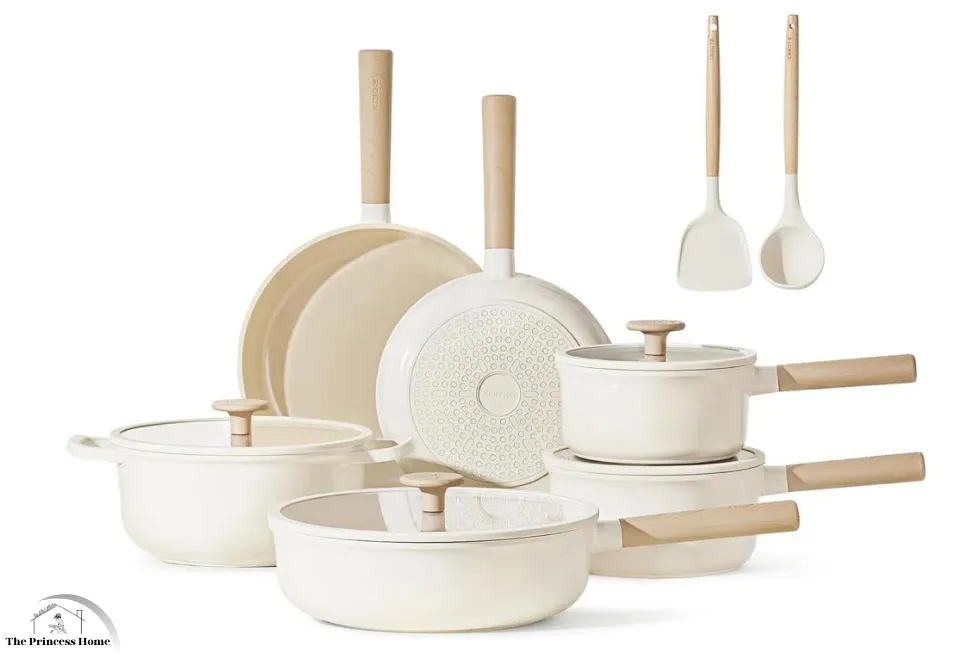
5.Ceramic:
Ceramic cookware is made from clay fired at high temperatures and coated with a glaze. It provides even heat distribution and is free from harmful chemicals. High-quality ceramic pots are durable and suitable for a variety of cooking tasks. Ceramic cookware has gained popularity in recent years due to its non-reactive nature, ease of cleaning, and attractive designs. Let’s explore the characteristics, advantages, and considerations associated with ceramic pots and pans:
Characteristics of Ceramic Cookware:
1.Material Composition:
Ceramic cookware is made from clay that is kiln-fired to create a hard, durable surface. The surface may be glazed or unglazed, with glazes providing a non-stick coating and adding color or design to the cookware.
2.Non-Reactive:
Ceramic cookware is non-reactive, meaning it does not leach chemicals or flavors into food, even when cooking acidic or alkaline dishes. This makes it a safe and healthy option for cooking a wide range of ingredients.
3.Even Heat Distribution:
Ceramic cookware distributes heat evenly across the cooking surface, preventing hot spots and ensuring that food cooks uniformly. This results in consistent cooking results and reduces the risk of burning or undercooking.
3.Easy to Clean:
Ceramic cookware is relatively easy to clean, as food particles are less likely to stick to the smooth surface. Most ceramic cookware is dishwasher safe, but hand washing with warm, soapy water is recommended to prolong its lifespan and appearance.
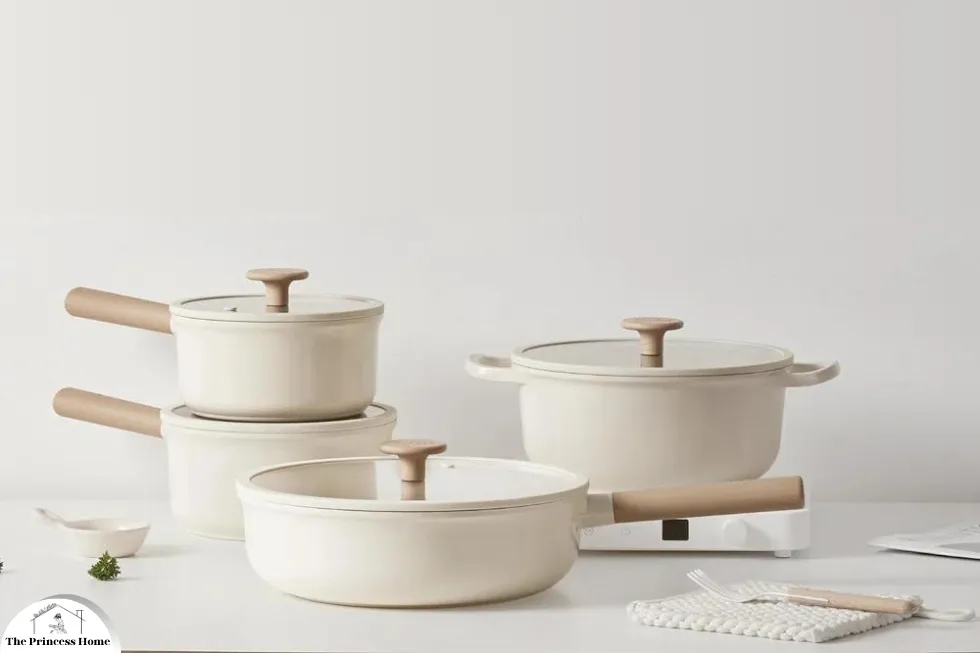
Advantages of Ceramic Cookware:
1.Non-Stick Properties: Ceramic cookware often features a non-stick coating that prevents food from sticking to the surface, making it easier to cook and clean. This non-stick coating is typically free of harmful chemicals like PFOA and PTFE, making ceramic cookware a safer option for health-conscious consumers.
2.Attractive Designs: Ceramic cookware comes in a wide range of colors, patterns, and designs, allowing you to express your personal style in the kitchen. Whether you prefer vibrant hues or subtle neutrals, there’s a ceramic cookware set to suit your aesthetic preferences.
3.Versatility: Ceramic cookware is suitable for all cooking surfaces, including gas, electric, ceramic, and induction cooktops. It can also be used in the oven for baking or roasting, offering versatility in cooking techniques.

Considerations for Ceramic Cookware:
1.Fragility: Ceramic cookware is relatively fragile compared to other materials like cast iron or stainless steel. It can chip or crack if dropped or mishandled, so it’s essential to handle ceramic cookware with care and avoid sudden temperature changes.
2.Heat Limitations: While ceramic cookware can withstand high temperatures in the oven, it may not be suitable for high-heat cooking on the stovetop. Rapid temperature changes or cooking over high heat can cause the ceramic coating to degrade or become discolored.
3.Quality and Durability: Not all ceramic cookware is created equal, and the quality and durability of ceramic coatings can vary between brands. It’s essential to choose reputable manufacturers that use high-quality materials and employ durable coating techniques to ensure the longevity of your ceramic cookware.
4.Environmental Impact: Some ceramic coatings may contain potentially harmful chemicals or heavy metals, such as lead or cadmium, especially in cheaper or unregulated products. It’s essential to choose ceramic cookware that is certified as lead-free and meets safety standards for food contact.
- Pros: Non-reactive, easy to clean, and available in various colors and designs.
- Cons: May contain lead or other harmful substances in glazes, so it’s essential to choose certified lead-free ceramic cookware. Also, ceramic cookware is relatively fragile and prone to chipping.
In conclusion, ceramic cookware offers non-stick properties, even heat distribution, and attractive designs, making it a popular choice for many home cooks. By understanding its characteristics and considerations, you can enjoy the benefits of ceramic pots and pans while ensuring their safety, durability, and performance in the kitchen. Whether you’re frying eggs, simmering sauces, or baking casseroles, ceramic cookware provides a versatile and stylish option for all your culinary needs.

6.Non-Stick Coatings:
Non-stick coatings are commonly used in cookware to prevent food from sticking to the cooking surface, making it easier to cook and clean. These coatings can vary in composition and safety, so it’s essential to understand the different types and considerations associated with non-stick coatings:
Types of Non-Stick Coatings:
1.Teflon (PTFE):
Teflon is a brand name for polytetrafluoroethylene (PTFE), a synthetic fluoropolymer. It was one of the first non-stick coatings developed and remains popular in many non-stick cookware products. Teflon provides excellent non-stick properties, but it can release toxic fumes when heated to high temperatures (above 500°F or 260°C), leading to health concerns.
2.PFOA-Free:
Perfluorooctanoic acid (PFOA) is a chemical used in the production of PTFE-based non-stick coatings. Due to health and environmental concerns, many manufacturers have phased out the use of PFOA in non-stick coatings, resulting in PFOA-free alternatives that are considered safer for consumer use.
3.Ceramic:
Ceramic coatings are made from inorganic materials such as silica, oxygen, and other natural minerals. They provide a non-stick surface without the use of PTFE or PFOA, making them a safer option for health-conscious consumers. Ceramic coatings are typically free of harmful chemicals and do not release toxic fumes when heated.
4.Silicone:
Silicone coatings are made from silicone polymers, which are flexible and heat-resistant. While silicone coatings provide non-stick properties, they are less common in cookware compared to PTFE or ceramic coatings. Silicone coatings are generally considered safe for cooking, but they may not offer the same durability or performance as other types of non-stick coatings.
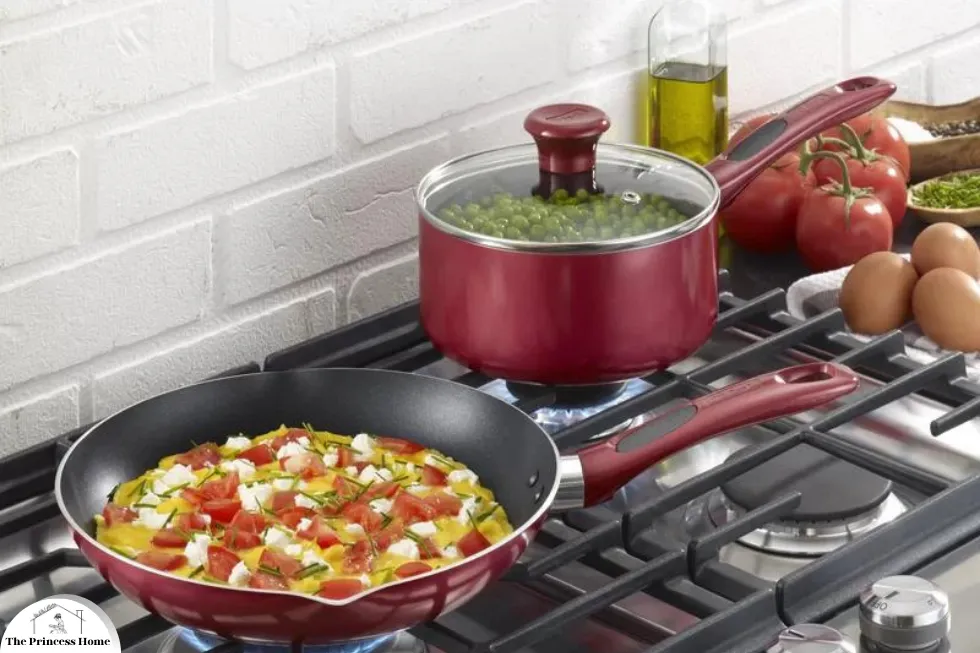
Advantages of Non-Stick Coatings:
1.Ease of Cooking: Non-stick coatings prevent food from sticking to the cooking surface, making it easier to cook delicate foods like eggs, pancakes, and fish without them tearing or breaking apart.
2.Ease of Cleaning: Non-stick cookware is easier to clean than traditional cookware, as food residues are less likely to adhere to the surface. This can save time and effort during the cleaning process, especially for dishes that are prone to sticking.
3.Healthier Cooking: Non-stick coatings reduce the need for excess oil or butter when cooking, resulting in lighter, healthier meals. This can be beneficial for individuals looking to reduce their calorie or fat intake without sacrificing flavor.

Considerations for Non-Stick Coatings:
1.Safety: Some non-stick coatings, particularly those containing PTFE or PFOA, may release toxic fumes when heated to high temperatures. It’s essential to use non-stick cookware responsibly and avoid overheating or using metal utensils that can scratch or damage the coating.
2.Durability: Non-stick coatings can wear off over time with regular use and cleaning, especially if abrasive cleaning tools or harsh detergents are used. It’s essential to follow the manufacturer’s instructions for care and maintenance to prolong the lifespan of non-stick cookware.
3.Scratch Resistance: Non-stick coatings are susceptible to scratching, especially when metal utensils or abrasive cleaning tools are used. To preserve the integrity of the coating, it’s best to use silicone, wood, or plastic utensils and avoid using metal scouring pads or harsh abrasives.
4.Environmental Impact: Some non-stick coatings contain chemicals or materials that may have environmental implications, such as PFOA or other fluorinated compounds. Choosing PFOA-free or ceramic non-stick coatings can help reduce the environmental impact of non-stick cookware.
- Pros: Prevents food from sticking, making cleaning easier.
- Cons: Traditional non-stick coatings like Teflon (PTFE) can release harmful fumes when overheated, leading to health concerns. Look for PFOA-free and PTFE-free alternatives like ceramic or silicone coatings.
In conclusion, non-stick coatings offer convenient cooking and cleaning benefits, but it’s essential to consider safety, durability, and environmental impact when selecting non-stick cookware. By choosing PFOA-free or ceramic coatings and using non-stick cookware responsibly, you can enjoy the advantages of non-stick cooking while minimizing potential risks to your health and the environment.
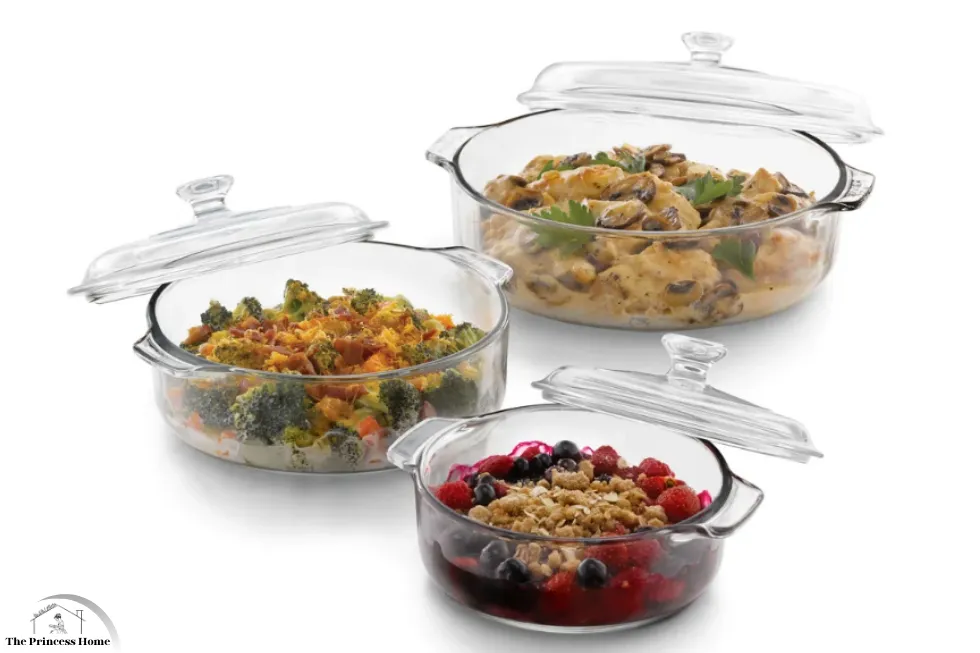
7.Glass:
Glass cookware, such as Pyrex, is inert and non-reactive, making it a safe option for cooking. It’s also microwave and oven-safe. While glass pots may not distribute heat as evenly as metal ones, they are an excellent choice for certain dishes and can be a healthy addition to your kitchen.
Glass cookware offers several advantages and considerations that make it a unique option in the kitchen. Let’s explore its characteristics, advantages, and considerations:
Characteristics of Glass Cookware:
1.Material Composition:
Glass cookware is made primarily from silica, which is melted and molded into various shapes for cooking and baking. It is non-porous and non-reactive, meaning it won’t absorb flavors or chemicals from food, making it a safe option for cooking.
2.Heat Resistance:
Glass cookware is heat-resistant and can withstand high temperatures, making it suitable for use in the oven, microwave, and even on the stovetop (depending on the type of glass and manufacturer’s recommendations). It can also handle rapid temperature changes without cracking or shattering.
3.Transparency:
Glass cookware is transparent, allowing you to monitor the cooking process without removing the lid or cover. This can be beneficial for tasks that require precise timing or visual cues, such as simmering sauces or baking bread.
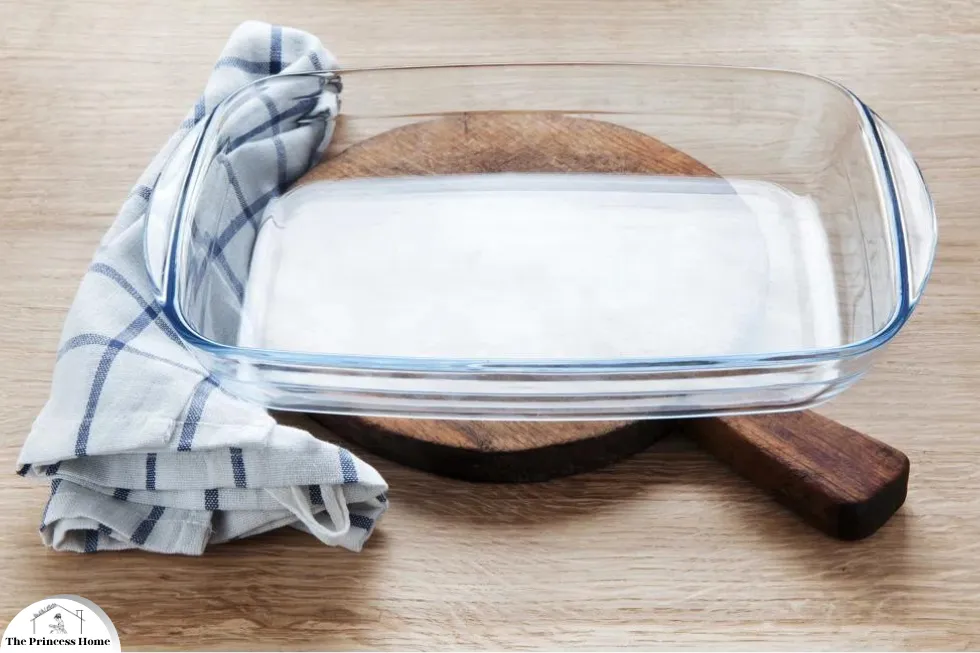
Advantages of Glass Cookware:
1.Non-Reactive: Glass cookware is non-reactive, meaning it won’t interact with acidic or alkaline foods, ensuring that flavors remain true to the ingredients without any metallic or off-tastes.
2.Versatility: Glass cookware is versatile and can be used for various cooking methods, including baking, roasting, broiling, and even serving. It’s suitable for both savory and sweet dishes, making it a practical option for everyday cooking and special occasions.
3.Easy to Clean: Glass cookware is relatively easy to clean, as it is non-porous and doesn’t retain flavors or odors. Most glass cookware is dishwasher safe, but it’s essential to check the manufacturer’s recommendations for specific care instructions.
4.Health and Safety: Glass cookware is considered a safe option for cooking, as it doesn’t contain harmful chemicals or coatings that can leach into food. It’s an excellent choice for individuals with allergies or sensitivities to certain materials.
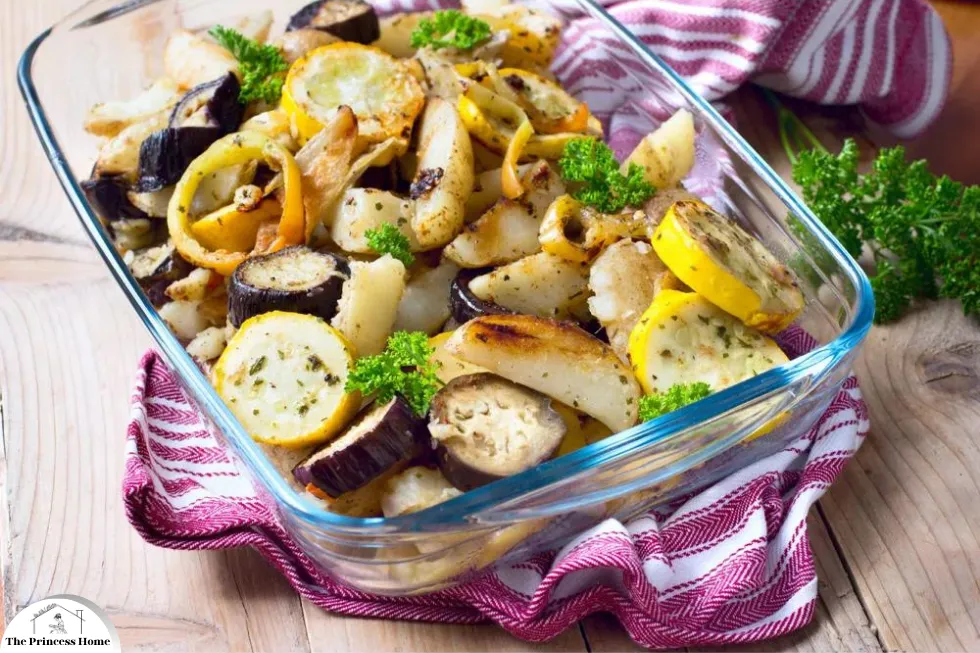
Considerations for Glass Cookware:
1.Fragility: While glass cookware is durable and heat-resistant, it can still break or shatter if dropped or exposed to sudden temperature changes. It’s essential to handle glass cookware with care and avoid thermal shock by allowing it to cool gradually before washing or placing it in the refrigerator.
2.Limited Thermal Conductivity: Glass is not as efficient a conductor of heat as metal, so glass cookware may heat up more slowly and distribute heat less evenly. This can result in uneven cooking or longer cooking times compared to metal cookware.
3.Weight: Glass cookware can be heavier than other materials like stainless steel or aluminum, especially larger pieces like baking dishes or casserole pans. It’s essential to consider the weight of glass cookware when handling or storing it, especially if you have limited strength or mobility.
4.Scratching: While glass cookware is generally scratch-resistant, it can still be scratched or damaged by sharp utensils or abrasive cleaning tools. It’s best to use silicone, wood, or plastic utensils and avoid using metal scouring pads or harsh abrasives to preserve the integrity of the glass surface.
- Pros of glass cookware: Non-reactive, versatile, easy to clean, transparent for monitoring cooking, safe for health.
- Cons of glass cookware: Fragile, heavier than other materials, limited thermal conductivity, susceptible to scratching, may have limited use on stovetops.
In conclusion, glass cookware offers several advantages, including non-reactivity, versatility, and ease of cleaning. By understanding its characteristics and considerations, you can make an informed decision when choosing glass pots and pans for your kitchen. Whether you’re baking lasagna, roasting vegetables, or serving a salad, glass cookware provides a safe and practical option for all your cooking needs.
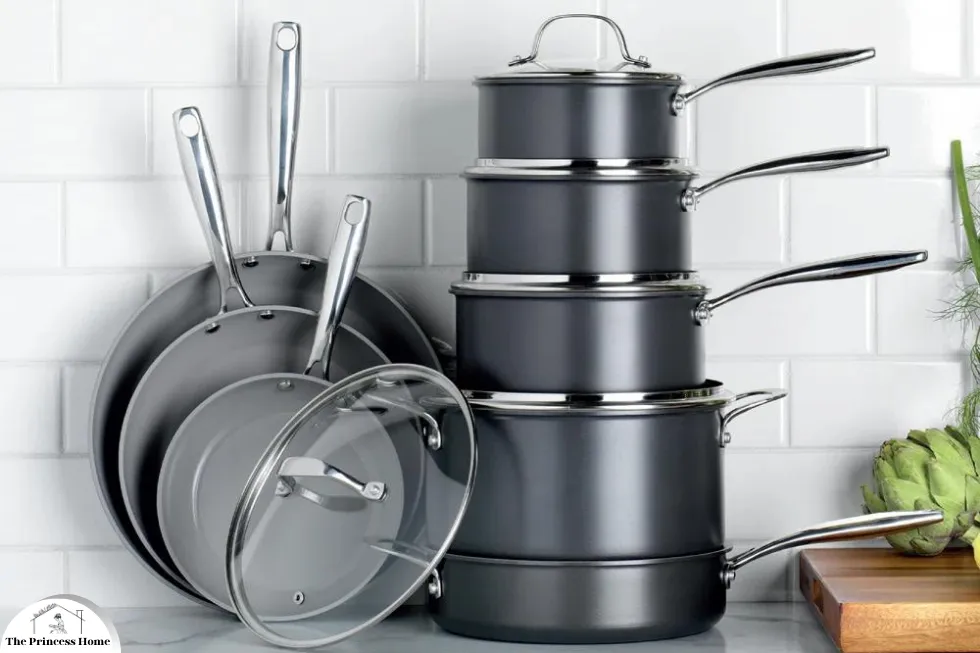
5.Granite pots
Granite pots are a type of cookware that feature a granite-like coating on their surface, typically made from a combination of mineral particles and non-stick materials. While they are marketed as durable and non-stick, When choosing pots made from these materials, consider factors such as your cooking preferences, maintenance requirements, and budget. With proper care, pots made from stainless steel, cast iron, glass, or ceramic can provide safe and healthy cooking for years to come. Granite pots, also known as granite cookware or stone pots, are gaining popularity in kitchens worldwide for their durability, non-stick properties, and attractive appearance.
Let’s delve into the characteristics, advantages, and considerations associated with granite pots:
Characteristics of Granite Pots:
1.Material Composition:
Despite the name, granite pots are not made of actual granite but are typically composed of an aluminum or cast iron core with a granite-like or stone-derived coating. This coating is often a combination of natural minerals and ceramic particles, which give the cookware its distinctive speckled appearance.
2.Non-Stick Surface:
Granite pots feature a non-stick coating that allows for easy release of food without the need for excess oil or butter. This makes them ideal for cooking a wide range of dishes, from eggs and pancakes to meats and vegetables, with minimal sticking or burning.
3.Even Heat Distribution:
Granite pots distribute heat evenly across the cooking surface, preventing hot spots and ensuring that food cooks uniformly. This results in consistent cooking results and reduces the risk of burning or undercooking.
4.Durability:
Granite pots are known for their durability and resistance to scratching, chipping, and warping. The non-stick coating is generally robust and long-lasting, providing reliable performance for years of cooking enjoyment.

Advantages of Granite Pots:
1.Non-Toxic: Granite pots are typically free of harmful chemicals such as PFOA, PFOS, lead, and cadmium, making them a safe option for cooking. The natural mineral-based coating ensures that no toxic substances leach into your food, promoting healthier cooking practices.
2.Ease of Cleaning: Granite pots are relatively easy to clean, as food residues are less likely to stick to the non-stick surface. Most granite pots are dishwasher safe, but hand washing with warm, soapy water and a soft sponge is recommended to prolong their lifespan and appearance.
3.Versatility: Granite pots are suitable for various cooking methods, including stovetop cooking, baking, roasting, and even serving. They can be used on all types of cooktops, including gas, electric, ceramic, and induction.
4.Aesthetic Appeal: Granite pots have an attractive appearance with their speckled surface resembling natural granite or stone. They add a touch of elegance to any kitchen and can be displayed proudly on the stovetop or countertop.

Considerations for Granite Pots:
1.Temperature Limitations: While granite pots are generally heat-resistant, they may not be suitable for extremely high temperatures, such as broiling or searing at very high heat. Excessive heat can damage the non-stick coating and reduce its effectiveness over time.
2.Care and Maintenance: To preserve the non-stick properties of granite pots, it’s essential to avoid using metal utensils, abrasive cleaners, or harsh scouring pads that can scratch or damage the surface. Gentle cleaning with a soft sponge or cloth is recommended to maintain the integrity of the non-stick coating.
3.Quality and Brand Reputation: Not all granite pots are created equal, and the quality of the non-stick coating can vary between brands. It’s essential to choose reputable manufacturers that use high-quality materials and adhere to strict quality control standards to ensure the longevity and performance of your granite pots.
4.Fragility: While granite pots are durable and resistant to scratches and chips, they can still be damaged if dropped or mishandled. It’s essential to handle granite pots with care and avoid subjecting them to sudden impacts or rough treatment.
- Pros of granite pots: Durable, non-toxic, easy to clean, attractive appearance, non-stick cooking surface.
- Cons of granite pots: May not be suitable for high-heat cooking, potential for chipping or cracking, weight, limited availability compared to other types of cookware.
In conclusion, granite pots offer several advantages, including non-toxicity, durability, ease of cleaning, and aesthetic appeal. By understanding their characteristics and considerations, you can make an informed decision when choosing granite pots for your kitchen. Whether you’re frying, simmering, baking, or sautéing, granite pots provide a versatile and stylish option for all your cooking needs.

6.Enameled pots
Enameled pots, also known as enamel-coated or porcelain-coated pots, are versatile and durable cookware options suitable for a wide range of cooking tasks. Here’s an exploration of their characteristics, advantages, and considerations:
Characteristics of Enameled Pots:
1.Material Composition:
Enameled pots are typically made of a base material such as cast iron or steel, which is coated with a layer of enamel or porcelain. This coating provides a smooth, non-reactive surface that is resistant to staining and corrosion.
2.Non-Reactive Surface:
The enamel coating on enameled pots prevents the underlying metal from coming into contact with food, making them non-reactive. This means you can cook acidic ingredients like tomatoes or vinegar without worrying about metallic flavors leaching into your food.
3.Heat Retention:
Enameled pots, particularly those made of cast iron, have excellent heat retention properties. They distribute heat evenly and hold onto heat well, making them ideal for slow cooking, simmering, and braising.
4.Versatility:
Enameled pots are suitable for use on all types of stovetops, including gas, electric, ceramic, and induction. They can also be used in the oven for roasting, baking, and broiling.

Advantages of Enameled Pots:
1.Easy to Clean: The smooth, non-porous surface of enameled pots is easy to clean and resistant to staining. Most enameled pots are dishwasher safe, but hand washing with warm, soapy water is recommended to preserve the enamel finish.
2.No Seasoning Required: Unlike traditional cast iron cookware, which requires seasoning to develop a non-stick surface, enameled pots come pre-seasoned and ready to use. This makes them convenient for beginners and eliminates the need for regular maintenance.
3.Attractive Appearance: Enameled pots are available in a variety of colors and finishes, adding a pop of color and style to your kitchen. They can be displayed on open shelves or hung from pot racks as decorative accents when not in use.
4.Non-Stick Cooking Surface: The enamel coating on enameled pots provides a smooth, non-stick cooking surface that requires minimal oil or fat. This makes them ideal for cooking a wide range of dishes, from soups and stews to sauces and casseroles.
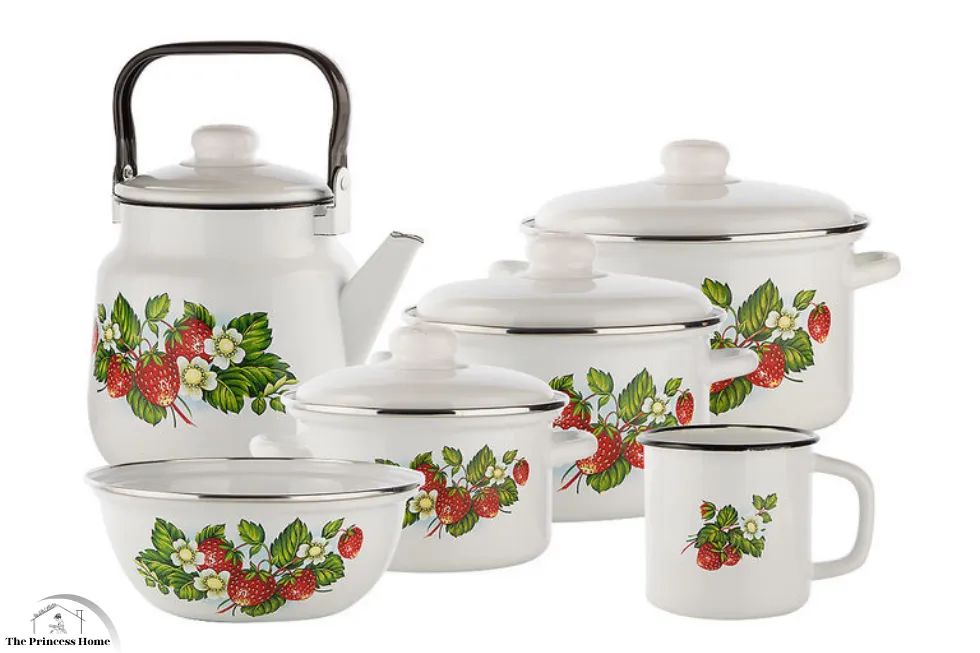
Considerations for Enameled Pots:
1.Durability: While enameled pots are durable, the enamel coating can chip or crack if subjected to rough handling or extreme temperature changes. It’s essential to avoid dropping or banging the pots and to use silicone or wooden utensils to prevent scratching.
2.Temperature Limitations: Enameled pots are not suitable for use over high heat or under the broiler, as extreme temperatures can cause the enamel coating to crack or discolor. It’s important to follow the manufacturer’s recommendations for temperature limits and avoid sudden temperature changes.
3.Cost: Enameled pots, particularly those made of cast iron, can be more expensive than other types of cookware. However, they offer durability, versatility, and aesthetic appeal that justify the investment for many home cooks.
4.Weight: Enameled cast iron pots can be heavy, especially when filled with food. It’s important to consider the weight of the pots when handling them, especially if you have limited strength or mobility.
- Pros of enameled pots: Durable, non-reactive surface, easy to clean, no seasoning required, attractive appearance.
- Cons of enameled pots: May chip or crack with rough handling, temperature limitations, higher cost compared to some other types of cookware.
In conclusion, enameled pots offer several advantages, including easy cleaning, non-reactivity, and versatility. By understanding their characteristics and considerations, you can select enameled pots that meet your cooking needs and complement your kitchen decor. Whether you’re simmering a hearty stew, baking a crusty bread, or sautéing vegetables, enameled pots provide reliable performance and timeless style for all your culinary adventures.
There are a few considerations to keep in mind when it comes to their safety and effectiveness:
Considering Cooking Methods:
When choosing pots and pans for your kitchen, it’s essential to consider the cooking methods you use most frequently. Different cooking techniques require specific types of cookware to achieve optimal results. Here’s a breakdown of common cooking methods and the types of pots and pans best suited for each:
1.Searing and Browning:
Searing and browning are high-heat cooking methods used to develop flavor and create a golden crust on meats, fish, and vegetables. For these techniques, it’s best to use pans with excellent heat conductivity and retention, such as stainless steel or cast iron. These materials can withstand high temperatures and provide even browning without hot spots.
2.Simmering and Braising:
Simmering and braising involve cooking food slowly over low heat in liquid to tenderize tough cuts of meat and infuse flavors. For these methods, choose pots with thick, heavy bottoms that distribute heat evenly and retain warmth, such as cast iron or enamel-coated Dutch ovens. These pots are ideal for long, slow cooking and can be used on both the stovetop and in the oven.
3.Boiling and Blanching:
Boiling and blanching are quick-cooking methods used to cook vegetables, pasta, grains, and eggs in boiling water. For these techniques, use pots with high sides and a large capacity to accommodate the volume of water and ingredients. Stainless steel or aluminum pots are suitable for boiling and blanching due to their rapid heat conductivity and durability.
4.Frying and Sautéing:
Frying and sautéing involve cooking food quickly in oil or fat over medium to high heat. For these methods, use pans with a flat, wide cooking surface and low sides to promote evaporation and prevent steaming. Non-stick pans are ideal for frying and sautéing, as they require less oil and allow for easy release of food.
5.Roasting and Baking:
Roasting and baking are dry-heat cooking methods used to cook meats, poultry, vegetables, and baked goods in the oven. For these techniques, use baking sheets, roasting pans, and cake pans made of materials that conduct heat evenly and resist warping, such as stainless steel or aluminum. Non-stick coatings can be beneficial for easy release of baked goods.
6.Steaming:
Steaming is a gentle cooking method that preserves the natural flavors and nutrients of food by cooking it in steam. For steaming, use pots with a tight-fitting lid and a steamer basket or insert that suspends the food above the water. Stainless steel or bamboo steamers are commonly used for steaming vegetables, seafood, and dumplings.
By considering your preferred cooking methods and the characteristics of different types of cookware, you can select pots and pans that are well-suited to your culinary needs and preferences. Whether you’re searing a steak, simmering a stew, or baking a cake, the right cookware can enhance the flavor and quality of your dishes while making cooking a more enjoyable experience.
Different cooking methods require different types of pots and pans.
For example:
Searing or browning meat often requires a pan with high heat conductivity, such as stainless steel or cast iron. Slow cooking or braising benefits from materials with excellent heat retention, like cast iron or ceramic. Boiling or simmering liquids can be done in stainless steel, aluminum, or ceramic pots.
Assessing Your Cooking Habits:
Your cooking habits and preferences should also inform your choice of cookware. Consider the following questions:
- How often do you cook?
- What types of dishes do you frequently prepare?
- Are you comfortable with the maintenance required for certain materials, such as seasoning cast iron or hand-washing delicate ceramic?
Budget and Longevity:
While it’s tempting to opt for the cheapest cookware available, investing in high-quality pots and pans can save you money in the long run. Consider the durability and lifespan of the cookware, as well as any warranties or guarantees offered by the manufacturer.
Environmental Impact:
Lastly, consider the environmental impact of your cookware choices. Look for brands that prioritize sustainability and use eco-friendly materials and manufacturing processes. Additionally, opt for cookware that is recyclable at the end of its lifespan.
Conclusion:
Choosing healthy pots for cooking involves considering various factors, including material safety, cooking methods, personal preferences, budget, longevity, and environmental impact. By understanding the pros and cons of different materials, assessing your cooking habits, and prioritizing quality and sustainability, you can select cookware that enhances both the flavor of your dishes and the well-being of your family. Happy cooking!
1.Nonstick Coatings:
Non-stick cookware is popular for its convenience, but not all non-stick coatings are created equal in terms of safety. When choosing non-stick pots and pans, opt for those with ceramic or titanium-based coatings, which are free from toxic chemicals like PFOA and PFOS. These coatings offer excellent non-stick properties without compromising your health.
2.Avoid Aluminum:
Aluminum cookware can react with certain foods and potentially leach into your meals, especially when cooking acidic or highly alkaline foods. If you do use aluminum, make sure it is anodized or coated to prevent direct contact with food.
3.Check for Safety Certifications:
Look for pots and pans that are certified by reputable organizations for safety standards, such as the FDA (Food and Drug Administration) or NSF International. These certifications ensure that the cookware meets rigorous safety requirements and is suitable for use in the kitchen.
4.Size and Shape:
Consider the size and shape of the pot based on your cooking needs. Ensure it has a secure lid and handles that are comfortable to grip.
5.Maintenance:
Choose cookware that is easy to clean and maintain. Some materials, like cast iron, may require seasoning to prevent rusting, while others, like stainless steel, are dishwasher safe.
6.Versatility:
Invest in pots that can be used for various cooking methods, such as stovetop, oven, or even induction cooking, to maximize their utility in your kitchen.
7.Cost and Durability:
While quality cookware may come at a higher price, it’s often worth investing in durable pots that will last longer and provide safer cooking experiences.
Size, Shape, and Versatility:
Consider the size and shape of the pots based on your cooking needs and kitchen space. Choose cookware that can be used for various cooking methods, such as stovetop, oven, or induction cooking, to maximize its versatility.
Maintenance and Care:
Proper maintenance is essential for prolonging the lifespan of your pots and pans and ensuring safe cooking experiences. Follow the manufacturer’s instructions for use and care, avoid using metal utensils on non-stick surfaces, and hand wash cookware with mild detergent and a soft sponge.
By considering these factors, you can select pots that not only promote healthy cooking but also enhance your overall culinary experience.
In summary, granite pots can be a convenient option for non-stick cooking, but it’s essential to choose high-quality products from reputable manufacturers and take proper care of them to ensure safety and longevity. Always follow the manufacturer’s instructions for use and maintenance to get the best results from your cookware.
Here are some frequently asked questions related to choosing healthy pots for cooking.
Q1: Are nonstick pots and pans safe for cooking?
A: Nonstick pots and pans can be safe for cooking if they are made with high-quality, non-toxic coatings such as ceramic or titanium-based materials. It’s essential to avoid traditional nonstick coatings containing chemicals like PFOA and PFOS, which can release harmful fumes when heated.
Q2: Is aluminum cookware safe to use?
A: While aluminum cookware is lightweight and conducts heat well, there are concerns about its potential to react with certain foods and leach into the food being cooked. If using aluminum cookware, opt for anodized or coated versions to minimize direct contact with food.
Q3: What are the safest materials for pots and pans?
A: The safest materials for pots and pans are those that are non-toxic and non-reactive, such as stainless steel, cast iron, glass, and ceramic. These materials do not leach harmful chemicals into food and are considered safe for cooking.
Q4: How do I know if a pot is safe to use for cooking?
A: Look for pots and pans that are made from materials certified for safety standards by reputable organizations like the FDA or NSF International. Additionally, avoid cookware with questionable coatings or materials and opt for products from trusted manufacturers.
Q5: What should I consider when choosing pots for healthy cooking?
A: When choosing pots for healthy cooking, consider factors such as the material of the pot, nonstick coatings used, safety certifications, size and shape, maintenance requirements, versatility, and overall durability.
Q6: Are there any specific pots or pans to avoid for healthy cooking?
A: It’s best to avoid pots and pans made from materials that may leach harmful chemicals into food, such as those with questionable nonstick coatings or cheaply made cookware with unknown materials. Additionally, be cautious of pots with coatings that may scratch or chip easily, exposing potentially unsafe underlying materials.
Q7: How can I maintain the health and safety of my pots and pans?
A: To maintain the health and safety of your pots and pans, follow the manufacturer’s instructions for use and care. Avoid using metal utensils on nonstick surfaces, hand wash cookware with mild detergent, and regularly inspect for any signs of wear or damage. Proper maintenance will help prolong the lifespan of your cookware and ensure safe cooking experiences.



